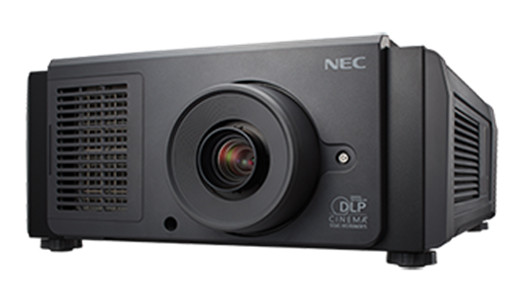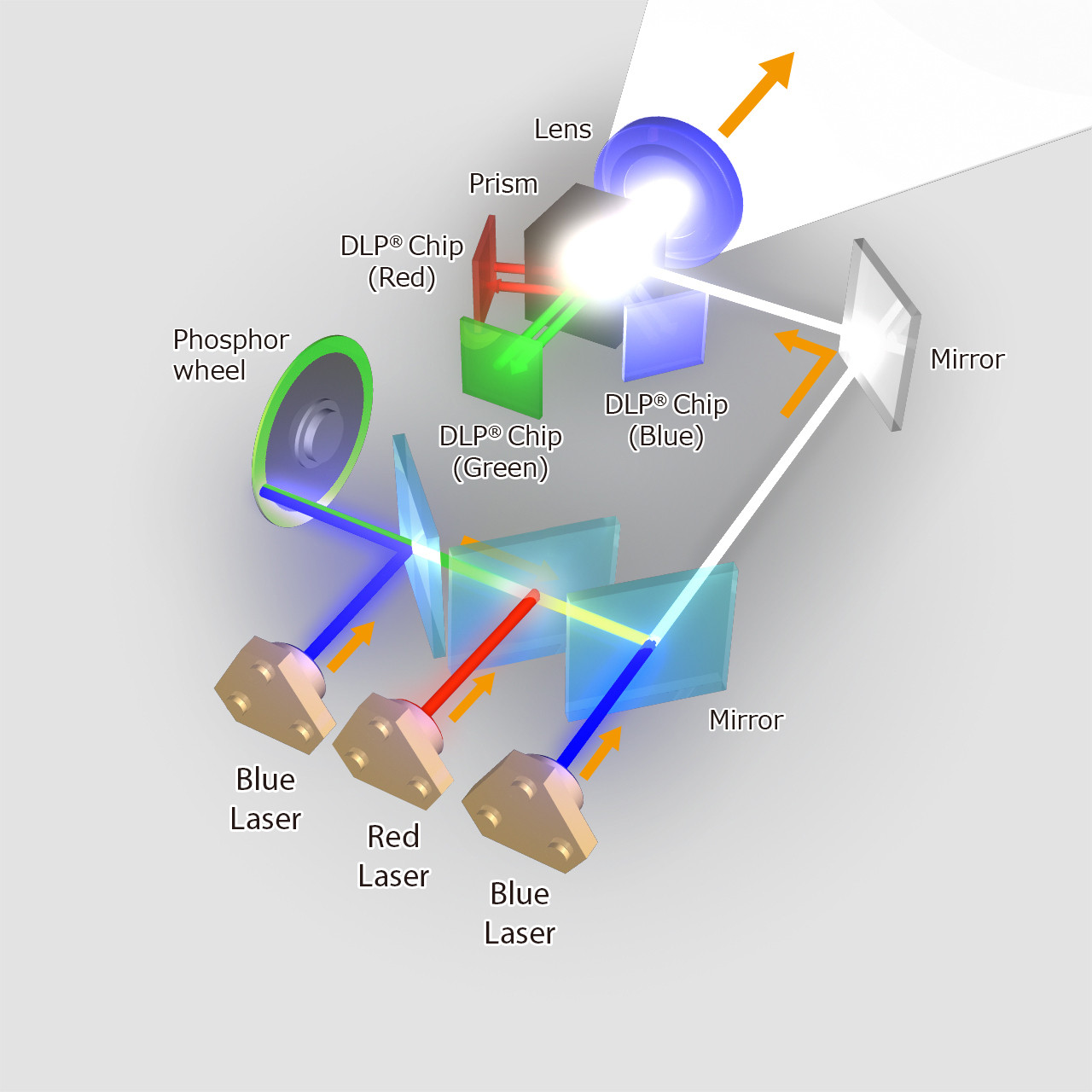NEC had two screening rooms at Cinemacon where they were showing off four laser-based projectors with different architectures. This included:
Debuted at CinemaCon was the new NC3541L 4K RB laser/phosphor projector which creates its images via an RB laser system plus a phosphor wheel for the green. It can play 2D or 3D content with more than 35,000 lumens and up to 20,000 hours of laser life. It is powered by the industry’ first red and blue lasers paired with green phosphor to produce a rich color spectrum.
This appears to be the same engine architecture in the NC1700L, but which has only 2K resolution and 14K lumens (see NEC Debuts RB Laser + Green Phosphor Projector). This architecture should increase efficiency by eliminating the yellow notch filter which can mean a big efficiency loss when using a yellow phosphor wheel.
As a result, cinema operators should benefit from a reduced total cost of ownership and less maintenance because the RB laser design eliminates the need to replace a lamp, which extends the projector’s lifetime, and the internal cooling system adds versatility. Expect this one to cost around $100K.
Launched about 9 months ago at Cine Europe (NEC Ready for “Laser, Laser, Laser”), the NC3540LS is a 4K RGB pure laser projector with an impressively wide color space – exceeding the DCI color space. It provides up to 35K lumens and 30,000 hours of life providing lower maintenance costs, resulting in lower TCO.
NEC’s NC3540LS Uses RGB Lasers
At CinemaCon, NEC announced a stacking solution that will enable up to 70K lumens from two of these systems. This system feature two external boxes: one for the lasers which is quiet and cool with the second being the chiller. Light is delivered by fiber to the projector head. This solution should retail for about $200K, said NEC, and should power screens up to 35 meters wide. It is a 3P 3D system so polarization methods must be used to create a 3D image, or, two heads can be used to create a 6P solution. The RGB lasers used in this projector are from IPG Photonics and based upon a fiber laser design. Competitors say such systems use a lot of optics making them more expensive, but this pricing seems very reasonable.
In the NEC screening rooms, we had a chance to see the two 35K lumen, 4K resolution models compared running the same content on a 1.0 gain screen. I am not sure if it was the content or the processing, but the darker tones looked quite noisy. Also, I thought the green color in the RB+green phosphor projector looked slightly less saturated and slightly lower contrast compared to the pure RGB laser. But attendees were clearly questioning whether they – or attendees – could see a difference in image quality considering one will cost $100K and the other $200K. Both were being speced at 30K hours to 50% of initial luminance, as well.
The NC1700L supports 2D and 3D content and is the industry’s first RB laser system which offers richer colors (photo).

As described in the article referenced above, the NC1700L can support screens up to 17 meters wide. In addition to the operation benefits of the RB+green phosphor architecture (diagram), the NC1700L is highly flexible and allows for easy installation without the need for a special exhaust system. This installation flexibility is further supported by the use of a much wider lens shift ratio that does not impact on image quality. Furthermore, the projector’s connectivity options make it perfectly adaptable to screening non-cinematic activities such as company presentations or gaming events. These mean cinema operators can increase usage and maximize revenue. It is available now for around $50K.

The NC1000C is NEC’s most compact 2K, 3D capable digital cinema projector and can be installed in small projection booths or transported for mobile applications. (NEC NC1000C for Smaller Cinemas Uses Lamps
We also saw the NC1700 compared to the NC1000C. It’s a compact 2K, DCI-certified digital projector designed for theaters with small screens, booth-less cinemas or mobile theaters. Our impression was that the color in the NC1700L looked over saturated, but that may have been the effect of the higher than standard 14FL luminance on screen. We were told it was about twice that level, as that was as detuned the projector could be. – CC

